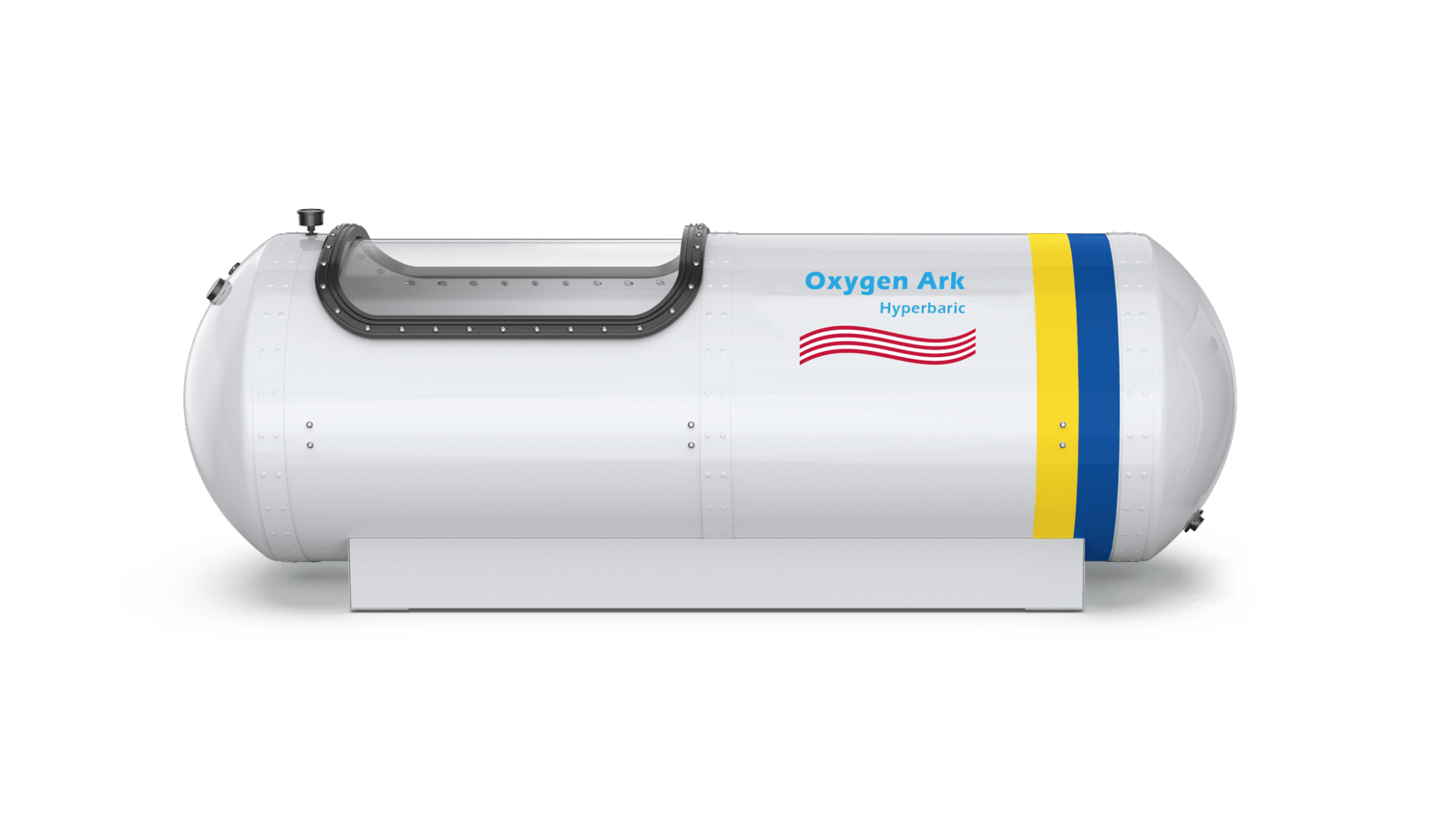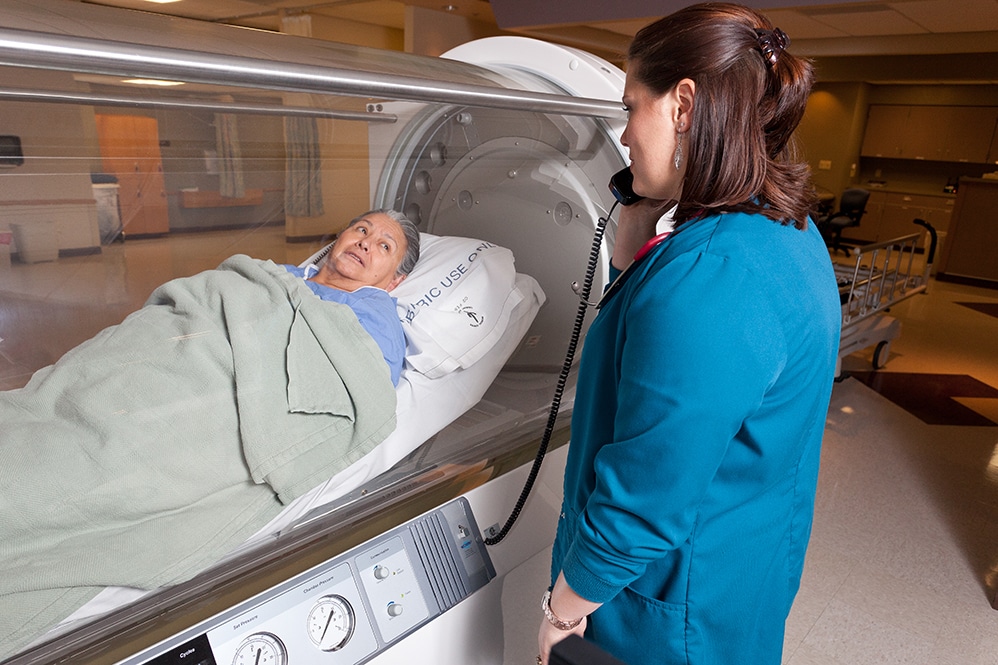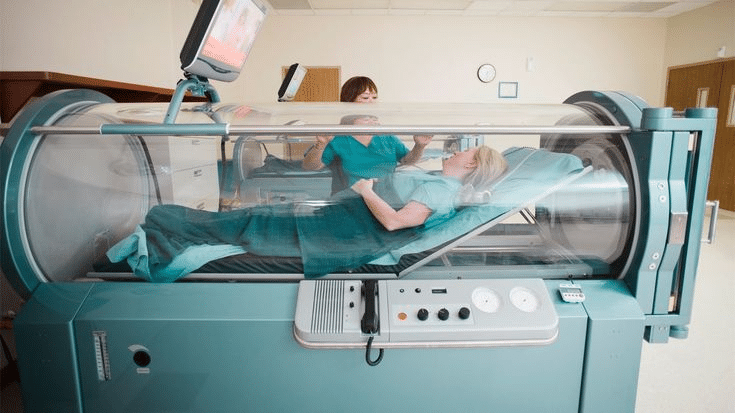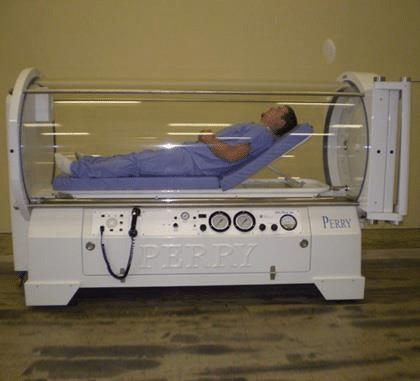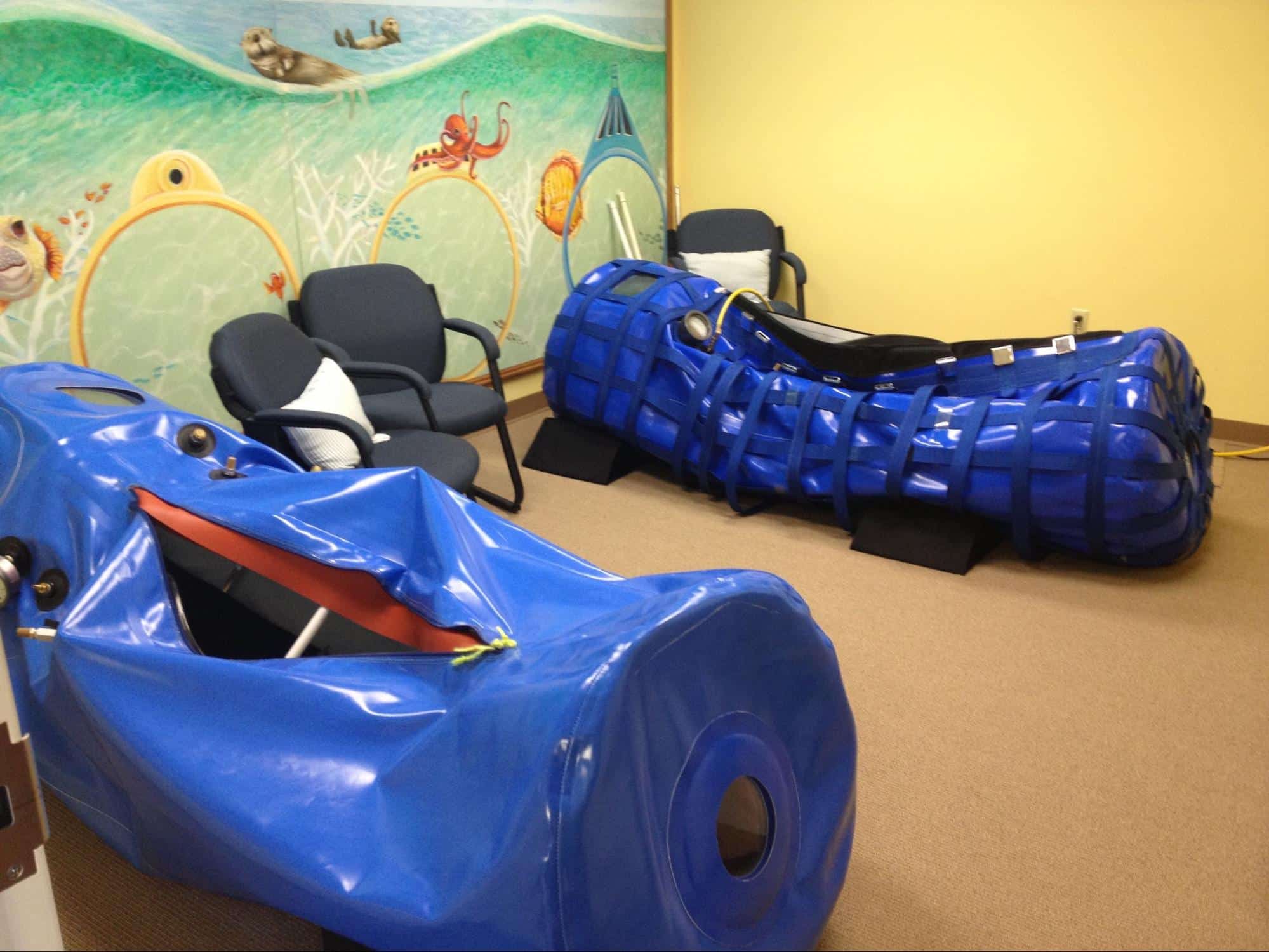Hyperbaric oxygen chambers are known to treat wounds innovatively, promote healing, reduce inflammation, and enhance a patient’s overall wellness. Let’s discover the benefits and effectiveness of this device for wound healing.
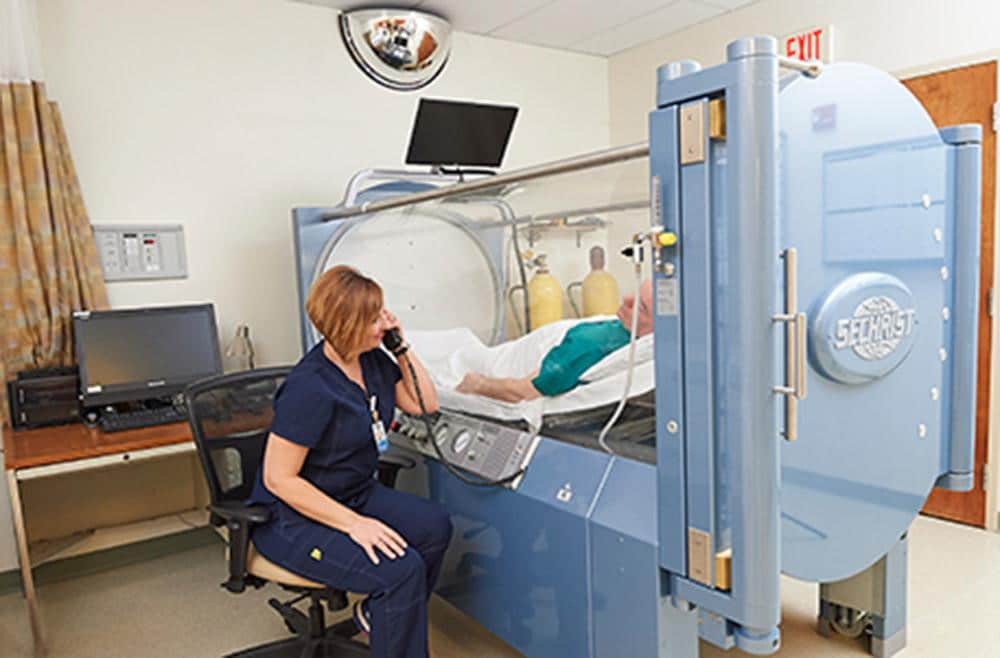
Image Source: Penn
Wound healing is an essential aspect of healthcare, and when wounds are not treated promptly, they can lead to severe consequences. Hyperbaric chamber therapy is an innovative treatment method promising to promote wound healing.
In this comprehensive guide, we’ll explore everything you need to know about the healing power of oxygen chamber therapy, including its benefits, how it works, etc. Whether dealing with a specific health condition or simply looking to boost your overall wellness, discover how oxygen chamber therapy can help you feel better and live healthier.
What is Hyperbaric Oxygen Therapy (HBOT)?
Hyperbaric oxygen therapy (HBOT), or oxygen chamber therapy or barometric chamber therapy, involves breathing pure oxygen in a pressurized chamber. This therapy helps increase the amount of oxygen in the bloodstream and promotes healing in the body.
Oxygen chamber therapy was first used in the 17th century to treat decompression sickness in divers. In the 20th century, it became a mainstream medical treatment for various health conditions such as bone healing, wound healing, surgery healing, etc.
How Effective is Hyperbaric Oxygen Treatment for Wound Healing?
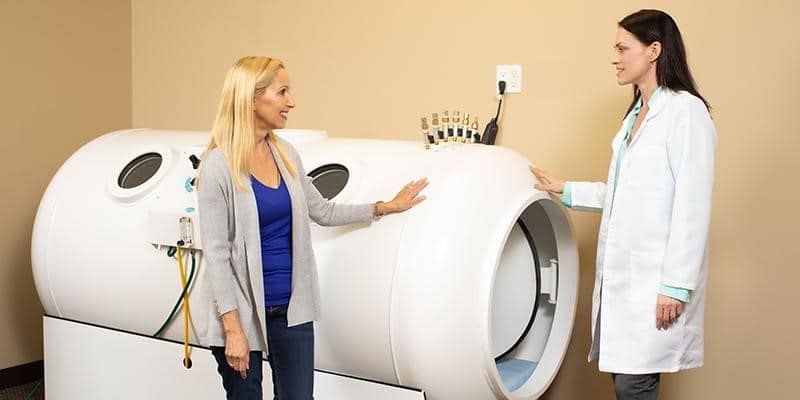
Image Source: Amen
Hyperbaric oxygen therapy is effective in promoting wound healing. The treatment aids in wound healing, and we will explore this in more detail.
How Barometric Chamber Works for Healing
The pressurized environment inside the hyperbaric or barometric chamber allows more oxygen to dissolve in the blood, which helps increase the oxygen supply to the body tissues. This increased oxygen supply promotes faster healing of wounds, reduces inflammation, and promotes the growth of new blood vessels.
HBOT for Wound Healing and Limb Salvage
Oxygen therapy is effective in promoting the healing of wounds. The increased oxygen supply to the wound site can help reduce inflammation, promote the growth of new blood vessels, and accelerate wound healing.
Hyperbaric oxygen therapy can also be used to promote the healing of chronic wounds and prevent limb amputation. The increased oxygen supply to the wound site can help stimulate the growth of new tissue and promote healing.
Oxygen Therapy for Bone Healing
Bone healing is a complex process involving forming new bone tissue. This process is initiated by a fracture, which triggers the release of various growth factors and cytokines. These signals attract cells to the fracture site, where they lay down new bone tissue.
Oxygen therapy has been shown to help promote the healing of bone fractures. The increased oxygen supply to the bone tissues can help stimulate the growth of new bone cells and promote bone healing.
Hyperbaric Chamber for Diabetic Wound Healing
Diabetic wounds, such as diabetic foot ulcers, are a common complication of diabetes that can be difficult to heal. This is partly due to the impaired circulation and nerve function that often accompany diabetes, leading to poor wound healing and an increased risk of infection.
Oxygenark hyperbaric chambers are effective in promoting the healing of diabetic wounds. By exposing the body to high levels of oxygen,
- Hyperbaric therapy can help to improve circulation
- Promote the growth of new blood vessels
- Enhance the body’s natural healing processes
Several studies have demonstrated the efficacy of hyperbaric therapy in promoting the healing of diabetic foot ulcers. A 2019 meta-analysis found that hyperbaric therapy significantly improved wound healing rates and reduced the need for amputation in patients with diabetic foot ulcers.
Are Barometric Chambers Effective for Surgery Healing
Post-operative Healing Process: Explained
After surgery, the body undergoes a healing process that involves repairing the damaged tissue and rebuilding the strength of the affected area. This process involves the formation of new blood vessels and the production of collagen, a protein that helps to support the tissue.
Hyperbaric Oxygen Therapy in Surgery Healing: Mechanism of Action
Hyperbaric oxygen therapy can aid in the post-operative healing process by increasing the amount of oxygen the body can absorb. This increased oxygen can help speed up the production of collagen and the formation of new blood vessels, promoting healing and reducing recovery time.
Hyperbaric Oxygen Therapy in Surgery Healing: Benefits
Hyperbaric oxygen therapy is effective in reducing the recovery time for a variety of surgical procedures, including;
- Plastic surgery
- Joint replacement surgery
- Dental implant surgery
By promoting healing and reducing inflammation, HBOT can help reduce pain and swelling and help patients return to normal activities faster.
Hyperbaric Oxygen Chambers for Wound Care

Image Source: WoundPros
Hyperbaric oxygen chambers are designed to aid in wound care. Proper wound care is critical in the treatment of diabetic wounds and can help to reduce the risk of complications such as infection and amputation. Wound care may involve;
- Regular cleaning and dressing changes
- Debridement of dead tissue
- The use of topical treatments such as antimicrobial agents or growth factors.
It is essential to work closely with a healthcare provider to develop an individualized wound care plan that considers the specific needs of the patient and their wound.
It is also essential to address any underlying health conditions contributing to poor wound healing, such as peripheral artery disease or neuropathy. Management of these conditions may involve medication, lifestyle changes, or other interventions.
Wound Care After Skin Surgery
Skin surgery, such as skin grafting and flap surgery, can be used to repair damaged or diseased skin. However, these procedures can be complicated by wound healing difficulties, including poor circulation, impaired immune function, and infection.
Hyperbaric oxygen therapy (HBOT) effectively promotes wound healing after skin surgery. Studies have shown that HBOT can significantly improve the healing of skin grafts and flaps.
In one study, patients who received HBOT after skin grafting had a significantly higher success rate than those who did not receive HBOT. Another study found that HBOT improved the healing of chronic wounds in patients who had undergone flap surgery.
What is the Most Complication of Hyperbaric Oxygen Therapy?
The most common complication of HBOT is middle ear barotrauma (MEB). Patients may experience difficulty with ear equalization, pressure and ear pain, and discomfort during the procedure. However, all these happen during the initial stage of the treatment. Other complications or side effects include;
- Paranasal sinus pressure
- Oxygen poisoning leads to lung failure, lung fluid, or seizures.
- Temporary vision changes, causing nearsightedness or myopic
- Lung damage
Cost of Hyperbaric Oxygen Therapy for Wound Healing
Generally, a hyperbaric treatment costs around $250 to $600, which depends on the number of sessions and the service location. The patient out-of-pocket cost of hyperbaric treatment cost depends on various factors such as;
- Reason or condition for care
- Specific insurance plan and,
- The severity of the condition
However, some conditions are approved by the FDA and sometimes covered by the patient’s insurance plan. These conditions are referred to as on-label, and some of them include the following;
- Failed skin graft and flap
- Diabetic lower extremity wounds (diabetic foot ulcers)
- Crush injury & other acute traumatic ischemias
Finding a Hyperbaric Chamber Medical Facility
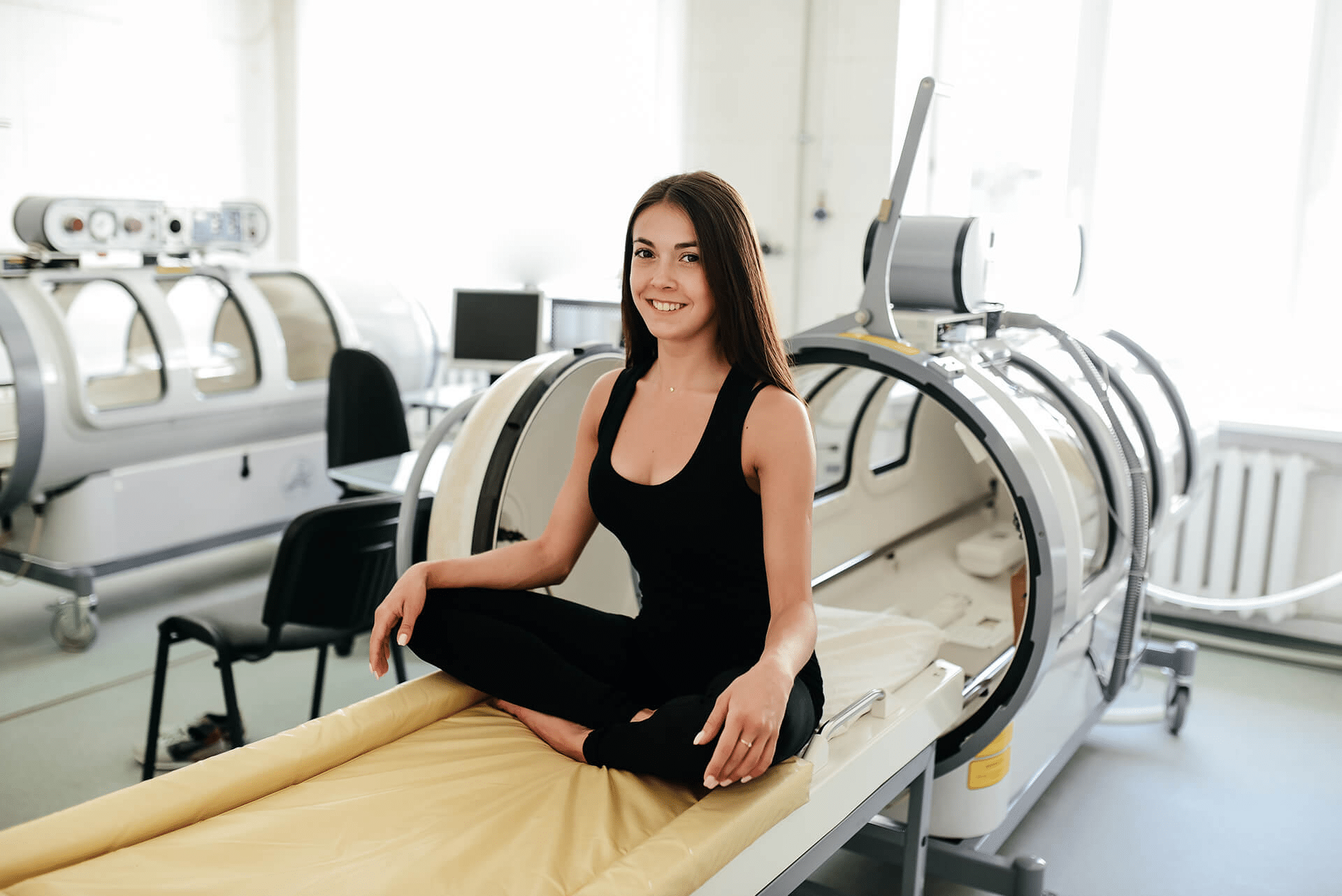
Image Source: Oxygenark.com
Choosing a Wound Healing Hyperbaric Chamber Location: Factors to Consider
- Location and accessibility: Choose a hyperbaric chamber facility that is convenient and easily accessible.
- Experience and expertise of staff: Look for facilities with highly experienced and qualified medical staff with training and certifications in hyperbaric medicine.
- Availability of necessary equipment and technology: Ensure the facility has the necessary equipment and technology to provide effective treatment.
- Quality of care: Look for facilities with a good reputation for providing high-quality patient care and outcomes.
- Cost and insurance coverage: Consider the cost of treatment and check if your insurance policy covers hyperbaric chamber therapy.
Hyperbaric Chamber for Wound Healing: How to Locate the Closest Medical Facility
- Search online for hyperbaric chambers in your area using search engines like Google, Bing, or Yahoo. You can also use hyperbaric chamber directories like the Hyperbaric Oxygen Therapy Directory or the International Hyperbaric Medical Association Directory.
- Contact your local medical society or professional association to inquire about hyperbaric chamber facilities in your area.
- Reach out to hospitals or medical centers and ask if they offer hyperbaric chamber services or can refer you to a facility that does.
- Contact medical equipment suppliers specializing in hyperbaric chambers and ask for recommendations on facilities in your area.
- Use professional networks or attend medical conferences to connect with other healthcare providers who may be able to provide recommendations.
Popular Wound Healing Hyperbaric Chamber Locations Around the World
- Oxygenark, China
- The Hyperbaric Medical Centre, United Kingdom
- The Whitaker Wellness Institute, United States
- The EUBS Hyperbaric Centre, Belgium
- The Baromedical Research Institute, Italy
Conclusion
Barometric chamber therapy or hyperbaric chamber therapy has shown promise in promoting healing, including diabetic wound healing and limb salvage. It is essential to consider various factors when choosing hyperbaric chambers for wound healing and to follow safety precautions during treatment. The future of hyperbaric chambers for wound healing is promising, and with continued research, they may become even more effective in promoting wound healing.

